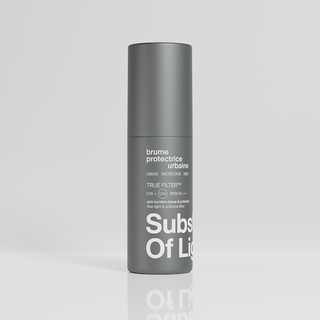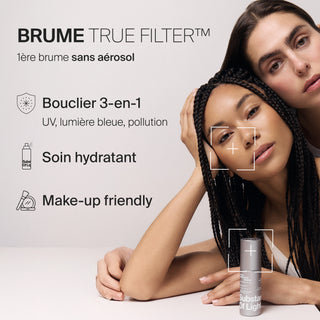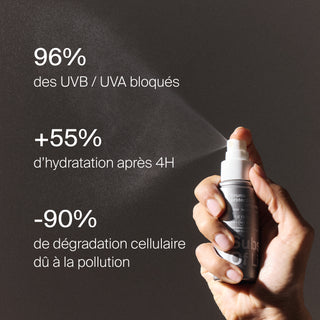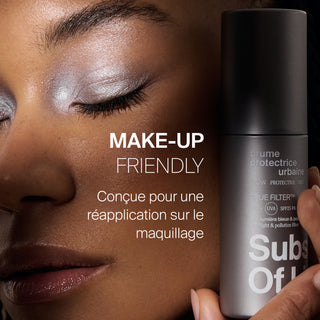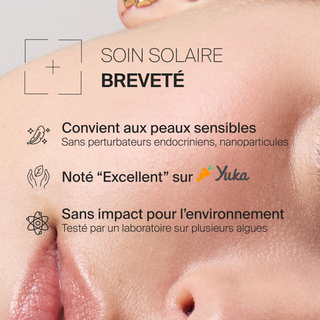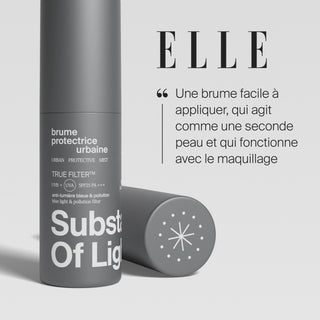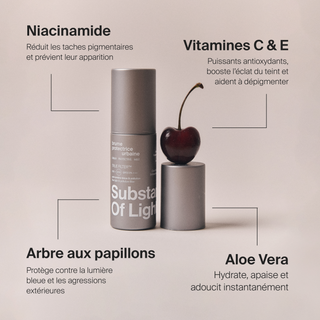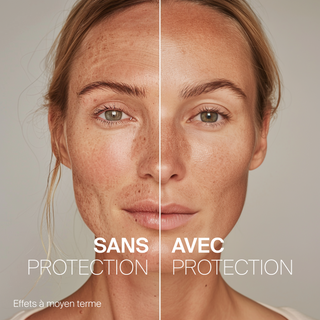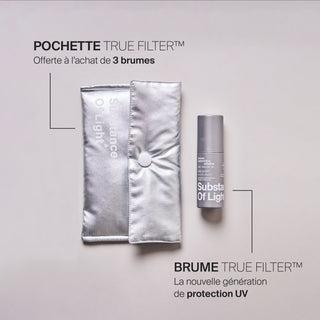Introduction
Living in the city exposes our skin to a hostile environment, characterized by increasing air pollution . How do they affect our health and our skin? Recent studies confirm the undeniable impact of pollution on skin aging . Daily protection , combined with appropriate products, is crucial to maintaining skin health in an urban environment.
Understanding urban pollution
Common polluting agents:
Urban air pollution is a harmful cocktail composed of fine particles, toxic gases and volatile organic compounds. Mainly generated by vehicle emissions, industrial activities and various anthropogenic sources, it creates peaks of pollution which intensify the alterations in the barrier function of the skin , already initiated by UVA rays alone . It is crucial to understand that this pollution not only affects our breathing; it can also be inhaled and absorbed through other parts of the body, including the hair, nails and skin , thus accentuating its harmful impacts.
The mechanisms of oxidative stress
A silent attack:
Just like solar radiation, pollution induces oxidative stress where free radicals damage skin cells , impacting the quality and radiance of the skin . Let's explore the complex mechanisms of this attack, an essential understanding for effective protection and the implementation of an anti-pollution strategy for the skin.
Effects on the skin
Premature aging:
Oxidative stress accelerates skin aging, aggravating macules or lentigines in polluted environments, contributing to the formation of wrinkles, loss of firmness and reduced elasticity. Gaseous pollutants, particularly ozone, and fine particles damage the skin surface, penetrating to the first layers of the living epidermis on skin already damaged by UV and HEV /blue light , with internal systemic contamination by inhalation.
No robust study has yet demonstrated a correlation between pollution and skin cancers.
Hyperpigmentation and inflammation:
Pollution intensifies hyperpigmentation and skin inflammation. Studies show that heavy metals in pollution can create pigmentary disorders . Fine particles disrupt the skin microbiome, degrading beneficial bacteria and promoting inflammation. Additionally, atopic eczema worsens in conjunction with pollution peaks.
Protection and prevention
Antioxidant Shields:
Antioxidants, such as vitamin C, niacinamide and vitamin E (tocopherol) , play a key role in protecting against the attacks of air pollution. Vitamin C, in particular, strengthens the skin's self-defense capabilities and provides additional protection against damage to the living epidermis. Focus on a cocktail of antioxidants to neutralize free radicals.
Deep cleaning:
An effective cleaning routine , removing pollution particles and sunscreen, is essential. Water-resistant mineral or chemical UV filters require deep cleaning with a cleansing oil. Opt for oily formulas that absorb and remove sunscreen residue, impurities, pollution and excess oil, maintaining clean, healthy skin, even in urban environments.
Conclusion
Act for Healthy Urban Skin: Living in the city does not mean compromising skin health. By understanding the effects of air pollution and oxidative stress, and adopting protective and preventative practices , we can maintain healthy and resilient urban skin.
TRUE FILTER™ Urban Protective Mist : the ideal protection against pollution
Discover our innovative formula with TRUE FILTER™, which provides extensive patented protection against blue light damage (HEV) and urban pollution. This protection goes beyond traditional photoprotective products, reducing up to 90% of oxidative stress caused by pollution, thus helping to prevent premature skin aging.
Explore the TRUE FILTER™ urban protective mist from Substance Of Light ® , a truly innovative breakthrough in protection against everyday urban pollution.

Bibliography
- E. Araviiskaia, E. Berardesca, T. Biebern, L. Marrot, et al. , „The impact of airborne pollution on skin” https://www.ncbi.nlm.nih.gov/pmc/articles/PMC6766865/
- KB Fuks, A. Hüls, D. Sugiri, et al. “Tropospheric ozone and skin aging: Results from two German cohort studies”. Environment International, Volume 124, March 2019, Pages 139-144 https://www.sciencedirect.com/science/article/pii/S0160412018321391
- Raj P. Fadadu, K. Abuabara, JR Balmes, JM Hanifin, and ML Wei1Air “Pollution and Atopic Dermatitis, from Molecular Mechanisms to Population-Level Evidence: A Review” Int J Environ Res Public Health. 2023 Feb; 20(3): 2526. https://www.ncbi.nlm.nih.gov/pmc/articles/PMC9916398/
- I. Martic, P. Jansen-Dürr, M. Cavinato, “Effects of Air Pollution on Cellular Senescence and Skin Aging”. Cells. 2022 Jul; 11(14): 2220. https://www.ncbi.nlm.nih.gov/pmc/articles/PMC9320051/
- A. Vierkötter, T. Schikiwski et al. “Airborne particle exposure and extrinsic skin aging” . J Invest Dermatol. 2010 Dec;130(12):2719-26., https://pubmed.ncbi.nlm.nih.gov/20664556/




